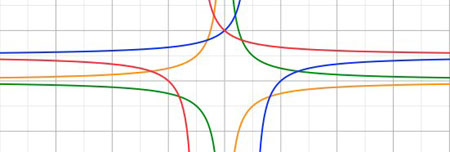Skip over navigation
This is one of a series of problems designed to develop learners' team working skills. Other tasks in the series can be found by going to this article.

Or search by topic
Number and algebra
Geometry and measure
Probability and statistics
Working mathematically
Advanced mathematics
For younger learners
Guess the Function
Age 16 to 18
Challenge Level 





- Problem
- Teachers' Resources
This is one of a series of problems designed to develop learners' team working skills. Other tasks in the series can be found by going to this article.

What are you aiming to do?
For the task:
The team has to find the rule on the Ruler's card, using the minimum number of tests. A test is asking whether a particular function obeys the unknown rule or not.As a team:
- finding out what others think
- giving reasons for ideas
- being concise
- reflecting on what has been said
- allowing everyone to contribute.
Getting started
The team can be made up of four or five people of which one person is chosen to be the "Ruler". If you do the task several times, members of the team can take turns at being the Ruler. You may also wish to appoint an observer.
You will need:
- the set of function rule cards.
- a piece of coloured paper (The Box)
- the set of function cards (large file).
Tackling the problem
- The team has the set of function cards. The domain of each function is either the values of x visible on the x-axis or is stated.
- The Ruler selects a rule card from the pack and keeps it hidden from the rest of the team.
- Before deciding on a function to present to the Ruler for testing - the team must discuss and agree as a team why they think it would make a good test case.
- If the function obeys the rule then the Ruler puts it in the Box, if it does not obey the rule it is placed outside the Box.
- If someone thinks they know the rule, they must share their reasoning with the rest of the team, who discuss and check their reasoning before deciding if it is a suitable conjecture to put forward.
- The Ruler then reveals the rule.
- If the team is right, the task can start again with a different Ruler. If they are wrong, they discuss where their error in reasoning may have been before moving on.
At the end of the task discuss how well you worked as a team.
Team and Ruler Guidelines
- No one should choose a card for testing without the agreement of the rest of the team.
- You are trying to find the rule by testing the minimum number of function cards.
- The Ruler can only put a chosen card in the Box or outside it.
- The Ruler can only speak to state whether the rule the team have decided on is correct or not.
Observer Guidelines
- Make a note of how often each member of the team contributes to the discussion.
- Check that the Ruler only tests a function that has been chosen by the agreement of the whole team.
- Look for occasions when someone asks someone else's opinion.
- Look for occasions when someone listens and responds to someone else's ideas.

